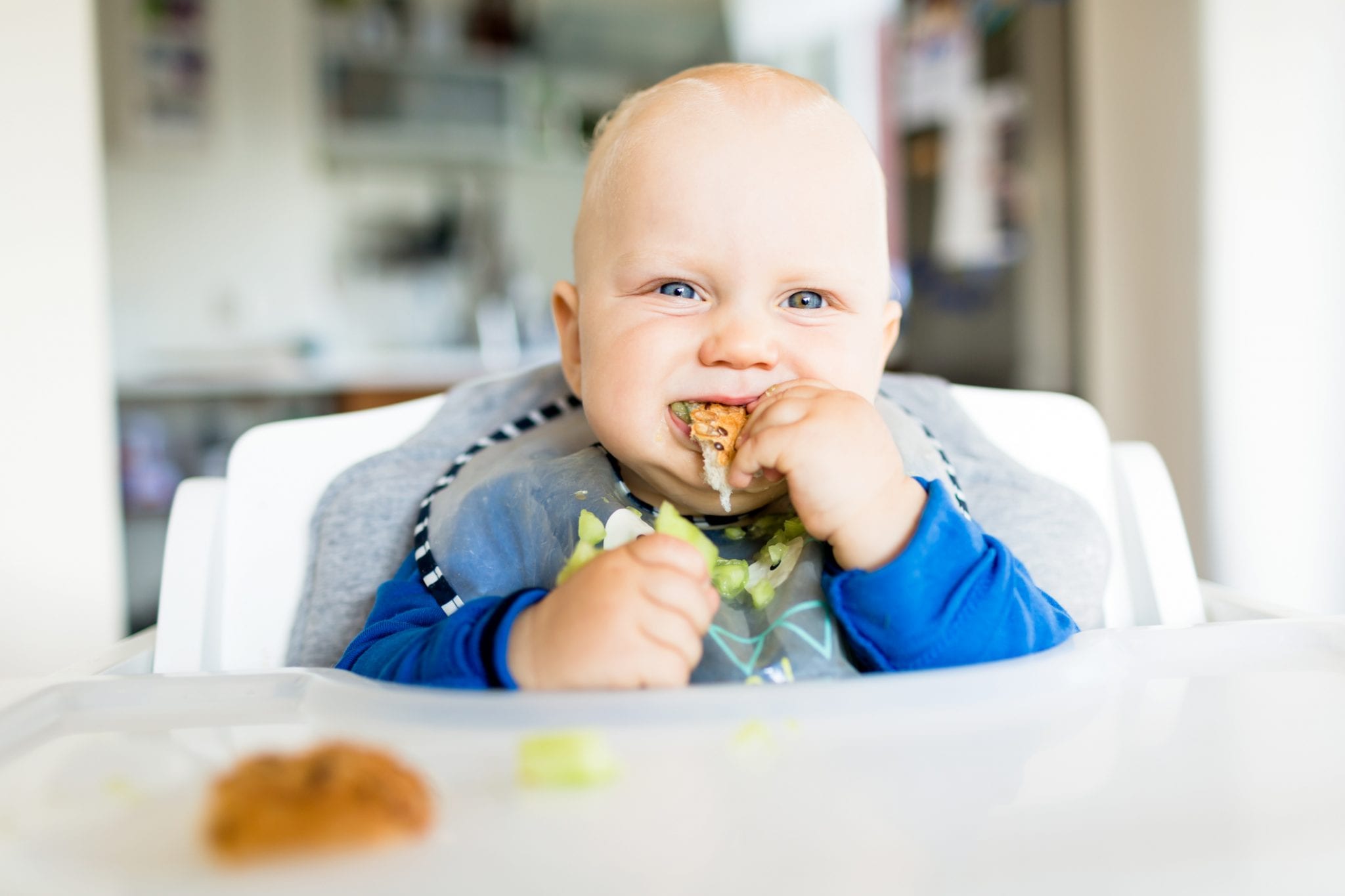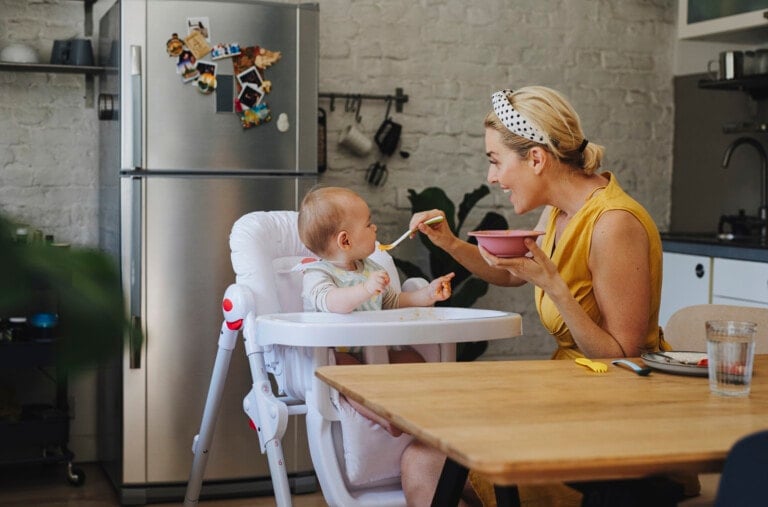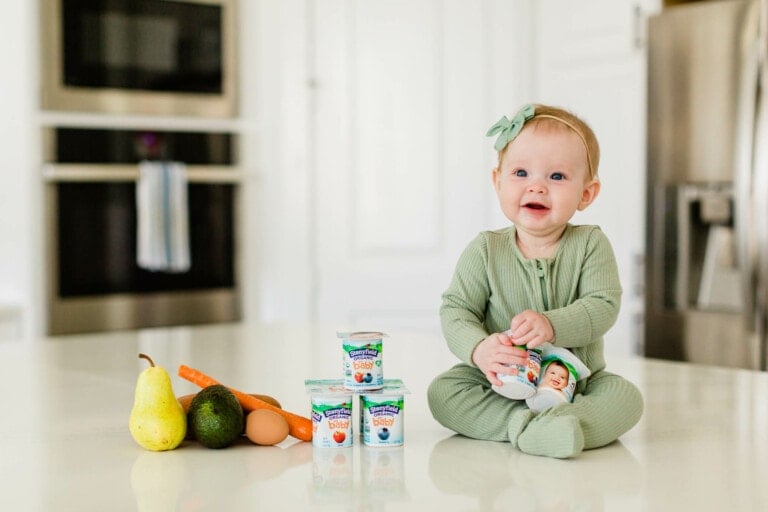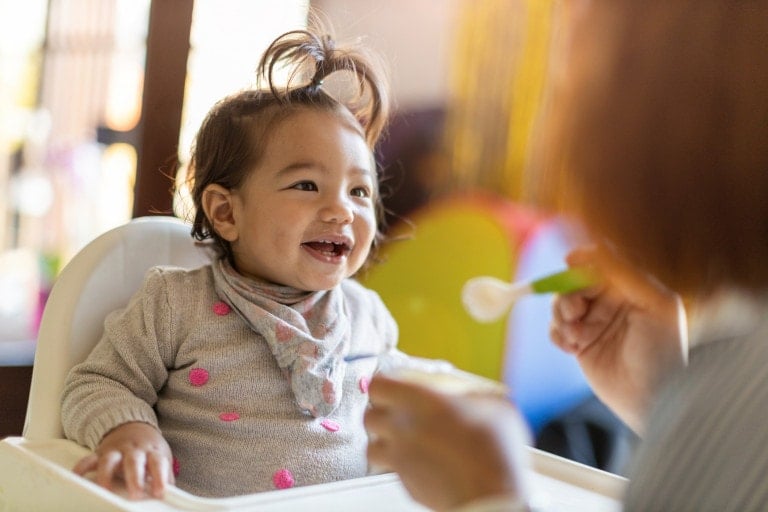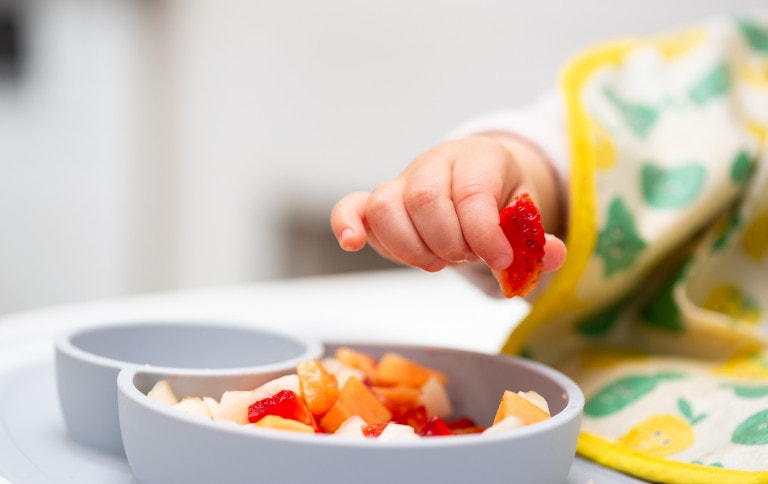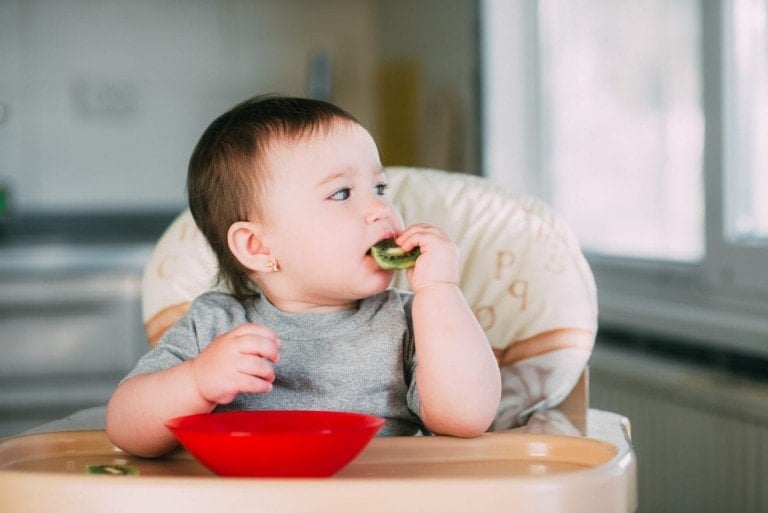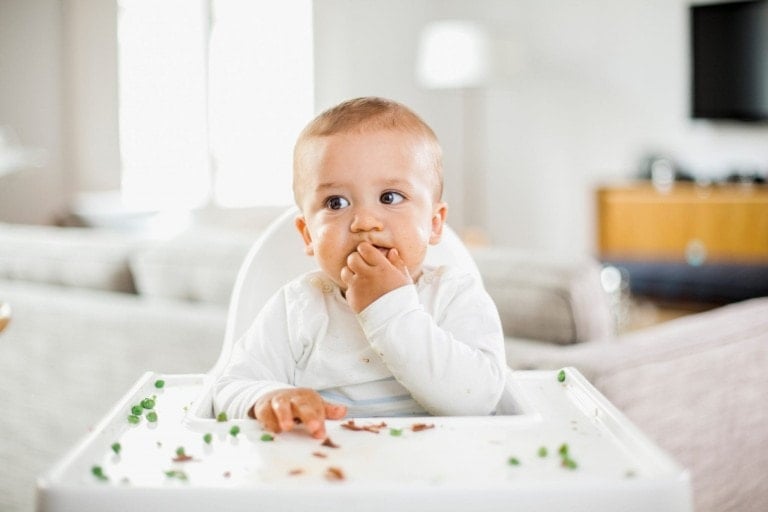1. Make sure your baby is upright and safe in a high chair or on your lap.
This is very important to prevent choking. As BLW can be quite messy, I would highly recommend a high chair! Check out all of our favorite high chairs here. A bib with a sizable pouch to catch falling food, like the Bella Tunno bib, is also extremely useful! See more helpful products you need for feeding your baby.
2. Introduce water in a straw cup at meals.
Initially, you will have to slowly squeeze the liquid up through the straw into your baby’s mouth, and most of it will still dribble out. Rather quickly, however, he will learn how to suck out of the straw, and in no time, he will do it all by himself! My son used to take his cup, tuck it into the pouch in his bib, and drink with joy and pride.
3. Keep the focus on playing and experimenting, especially in the first few months.
Mealtimes are for learning and experimenting and not necessarily for eating. Your baby will continue to get all of his nourishment from breastmilk or formula, so there’s no need to worry about how much he is—or isn’t—eating.
4. In the first few months, offer pieces of food that are stick or wedge-shaped and at least two inches long: half to hold and half to munch on.
Teeth are not required because babies can use their very strong gums to mash foods in their mouth. Although my son didn’t have his first two teeth until he was seven months old, he never had any issues eating from six months on!
5. Check that the food is not too hot by testing a mouthful (more reliable than using your finger).
6. Make sure that your baby is the one who decides what goes into his mouth.
Talk to him about the different foods, naming them and describing their colors and textures. Put food within easy reach (on his high chair tray or the tabletop) and let him explore, initially offering a small selection of foods so that he doesn’t feel overwhelmed. In my son’s first few months of BLW, I put three to four pieces of different kinds of food at a time on his tray (with more available in case he wanted it).
7. Don’t guide your baby’s hands, nor help or rush him.
Some babies can be discouraged from trying foods if parents (or others) interfere with their experience and make them feel self-conscious or under pressure. Try not to pay too much attention to your baby while he’s eating. Even though you may be eager to watch closely, he won’t feel comfortable being stared at. Just treat him like any other meal companion. Do not rush him, wipe his face mid-meal, start cleaning up mid-meal, praise or scold attempts at eating, or help him get food in his mouth. Let him do his thing! (Do not interfere unless he is actually choking, not simply gagging.)
In sum, mealtimes with your baby should be a normal, enjoyable, everyday activity. All he needs to develop skills and confidence is your quiet support and the rewards of handling and eating food. Try to eat with him and include him whenever possible, offering him plenty of opportunities to imitate you, practice his new skills, and enjoy social mealtimes.
Managing Expectations
Remember that your baby is learning and having fun. “A clean plate” is not the goal—and never should be. Your baby should eat only as much as he wants and needs. Babies are brilliant self-regulators and can be trusted to manage their intake. Accordingly, don’t expect your baby to eat much food at first. Remember that he doesn’t suddenly need extra food just because he is now six months old!
Many babies eat very little for the first few months, as they are just exploring food with their lips and tongue; they won’t chew or swallow much. They are still learning how to do it. (For my son, this was true for the first month or so, and then his intake really ramped up!) As your baby discovers that food tastes good, he will begin to chew and then swallow. He will figure it out in his own time.
Expect some (okay, a lot of) mess! Think about how to dress your baby and protect the area around him so that dealing with the mess isn’t stressful and dropped food can be safely handed back. If you have a dog, they can be very helpful with cleaning up the floor! Some people use a splat mat to protect the floor, and many (myself included) strip their baby down to his diaper for meals at home.
Have fun!













